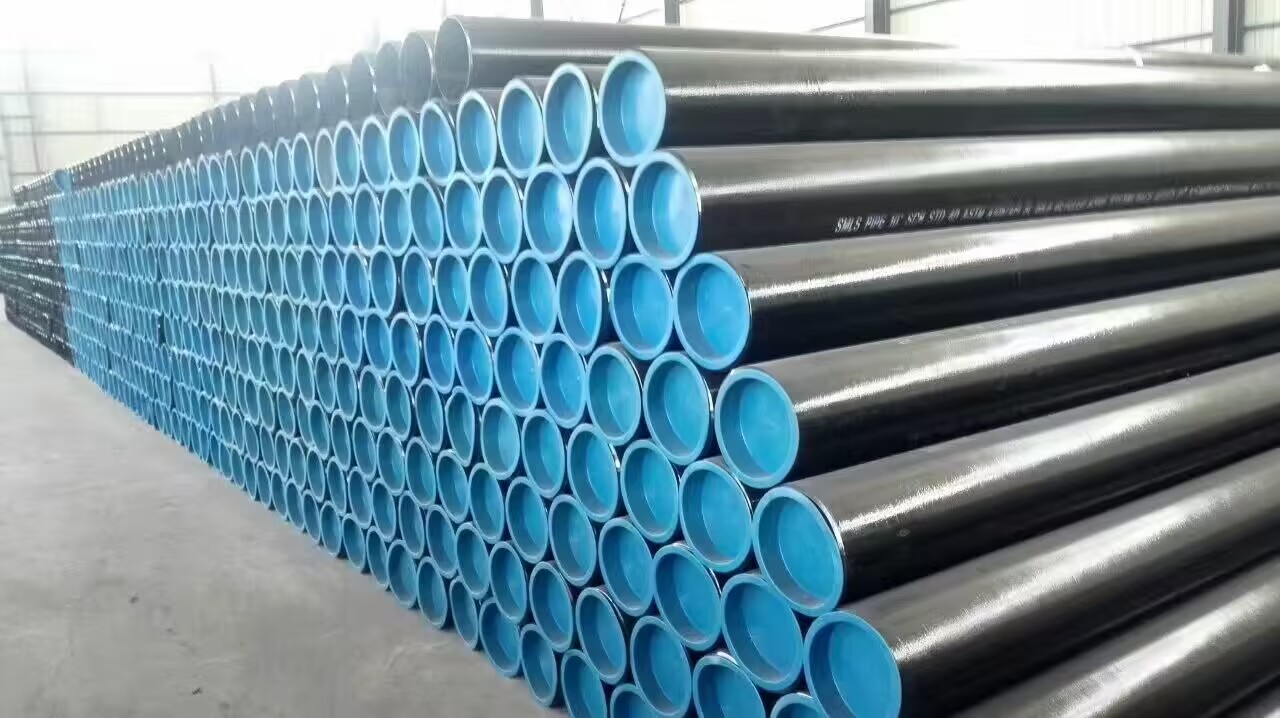The inspection of steel pipes (including seamless steel pipes and welded steel tubes) generally includes: inspection of geometric dimensions and surface quality; inspection of chemical composition, mechanical properties, process properties, high and low magnification structure; non-destructive testing;inspection and length measurement and weighing of some special properties.
(1) Geometric dimension inspection of steel pipes
The outer diameter, wall thickness, curvature, and length of the steel pipe can be checked on the inspection table with an external caliper, a micrometer, a curvature ruler, and a length tape.
The outer diameter, wall thickness and length can also be continuously detected by automatic size detection devices (such as automatic diameter measurement, thickness measurement, and length measurement devices). Steel pipe production plants put into production in the late 1980s generally have on-line automatic diameter and thickness measuring devices, and length measuring and weighing equipment in the finishing area. For OCTG pipes, it is also necessary to check the thread parameters.
(2) Inspection of the inner and outer surfaces of steel pipes
Generally, visual inspection is used to inspect the inner and outer surfaces, and in addition to visual inspection, the inner surface can also be inspected by using a reflective prism. Some special-purpose steel pipes also require non-destructive testing, including eddy current, magnetic flux leakage, ultrasonic, magnetic particle inspection, etc. to check the quality of the inner and outer surfaces of the steel pipe.

(3) Inspection of mechanical properties and process properties
In order to verify that the mechanical properties of the steel pipe meet the requirements of the standard, it is necessary to test the mechanical properties of the steel pipe samples.
Mechanical properties testing mainly includes tensile strength, yield strength, elongation, impact energy, etc. Process performance inspection mainly includes flattening test, flaring test, hydraulic test, curling test, cold bending test, perforation test, etc. These inspection items are selected according to different standards and differences in the use of steel pipes.
(4) Non-destructive testing
Non-destructive testing refers to the direct inspection of internal and surface defects of steel pipes without damaging them. At present, magnetic flux leakage flaw detection, ultrasonic flaw detection, eddy current and fluorescent magnetic particle flaw detection have been widely used in steel pipe enterprises. In recent years, the non-destructive flaw detection method has made great progress, and recently new technologies such as acoustic emission holography, ultrasonic spectrum analysis flaw detection, ultrasonic imaging flaw detection, and ultrasonic high-temperature flaw detection have emerged.
(1) Geometric dimension inspection of steel pipes
The outer diameter, wall thickness, curvature, and length of the steel pipe can be checked on the inspection table with an external caliper, a micrometer, a curvature ruler, and a length tape.
The outer diameter, wall thickness and length can also be continuously detected by automatic size detection devices (such as automatic diameter measurement, thickness measurement, and length measurement devices). Steel pipe production plants put into production in the late 1980s generally have on-line automatic diameter and thickness measuring devices, and length measuring and weighing equipment in the finishing area. For OCTG pipes, it is also necessary to check the thread parameters.
(2) Inspection of the inner and outer surfaces of steel pipes
Generally, visual inspection is used to inspect the inner and outer surfaces, and in addition to visual inspection, the inner surface can also be inspected by using a reflective prism. Some special-purpose steel pipes also require non-destructive testing, including eddy current, magnetic flux leakage, ultrasonic, magnetic particle inspection, etc. to check the quality of the inner and outer surfaces of the steel pipe.

(3) Inspection of mechanical properties and process properties
In order to verify that the mechanical properties of the steel pipe meet the requirements of the standard, it is necessary to test the mechanical properties of the steel pipe samples.
Mechanical properties testing mainly includes tensile strength, yield strength, elongation, impact energy, etc. Process performance inspection mainly includes flattening test, flaring test, hydraulic test, curling test, cold bending test, perforation test, etc. These inspection items are selected according to different standards and differences in the use of steel pipes.
(4) Non-destructive testing
Non-destructive testing refers to the direct inspection of internal and surface defects of steel pipes without damaging them. At present, magnetic flux leakage flaw detection, ultrasonic flaw detection, eddy current and fluorescent magnetic particle flaw detection have been widely used in steel pipe enterprises. In recent years, the non-destructive flaw detection method has made great progress, and recently new technologies such as acoustic emission holography, ultrasonic spectrum analysis flaw detection, ultrasonic imaging flaw detection, and ultrasonic high-temperature flaw detection have emerged.









